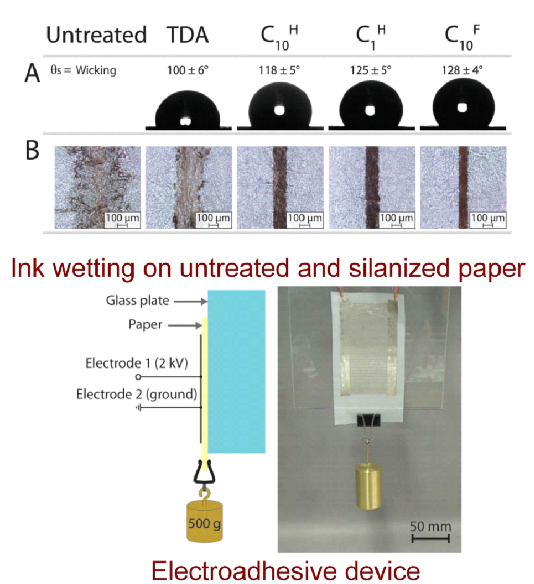Paper-based Electronics and MEMS
Controlled ink wetting and reactivity on paper yields defect-free devices

A Harvard MRSEC team led by George Whitesides and Jennifer Lewis demonstrated a method for high-resolution printing of conductive patterns on paper relevant for both printed electronics and MEMS applications. The wetting behavior of the paper substrates is modified using a fast vapor-phase treatment with organosilanes. A reactive silver ink is then patterned onto the modified paper via inkjet printing to create high resolution, defect-free electrodes (top). Using this approach, their team produced an electro-adhesive device by printing interdigitated electrodes over a large-area paper substrate. Upon applying an electric potential difference (2 kV), the paper-based device strongly adhered to a glass surface and is capable of supporting a 500-g weight (bottom).
�
David A. Weitz (Physics & Applied Physics)
Harvard MRSEC (DMR-1420570)
